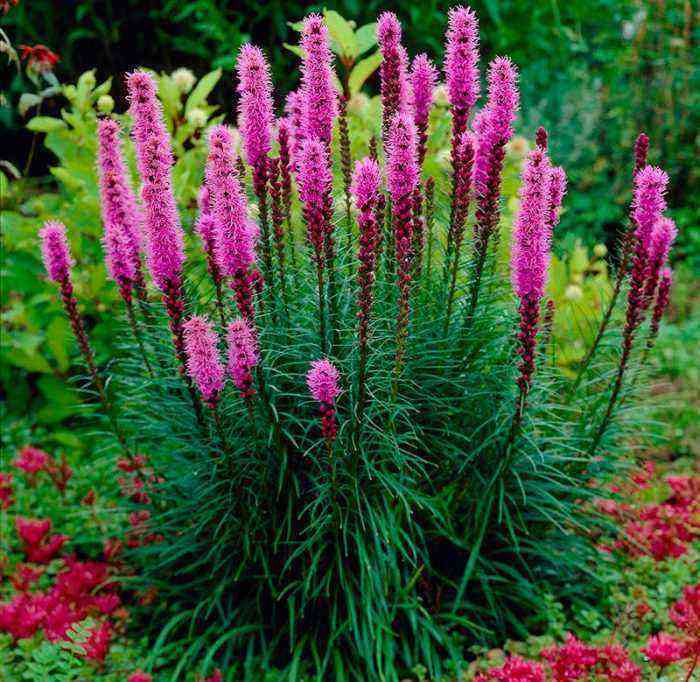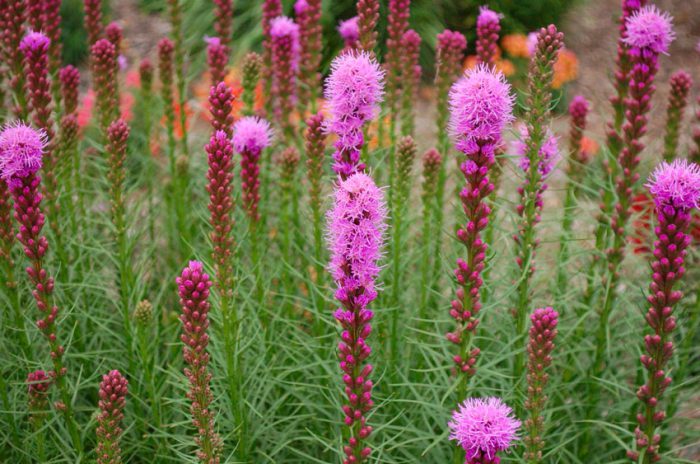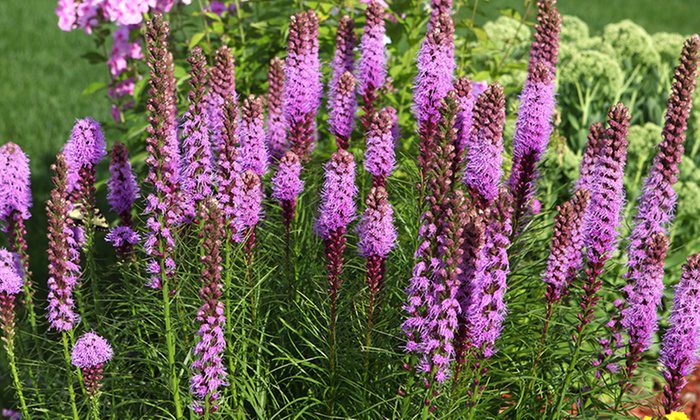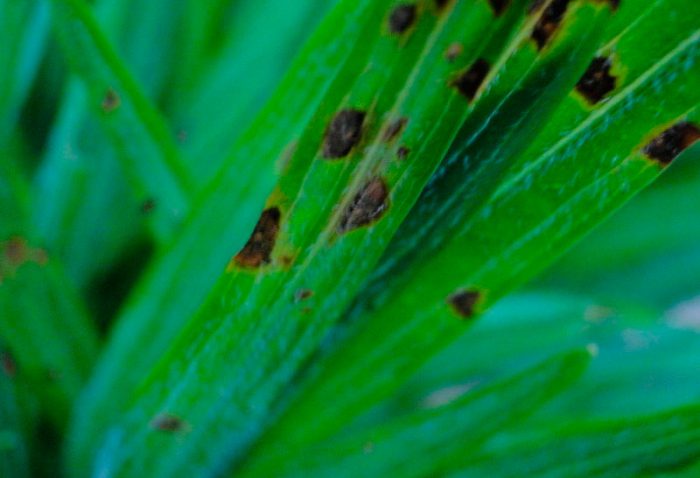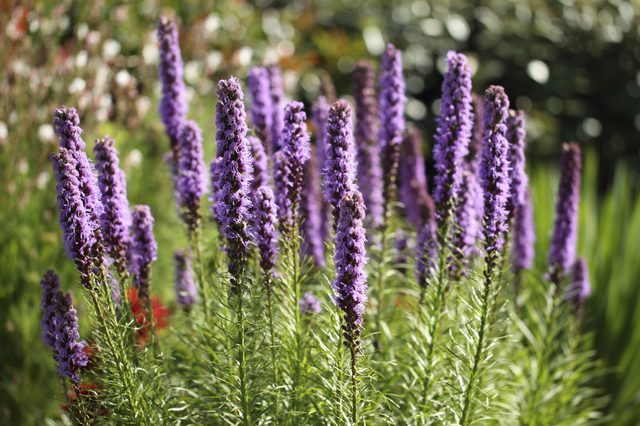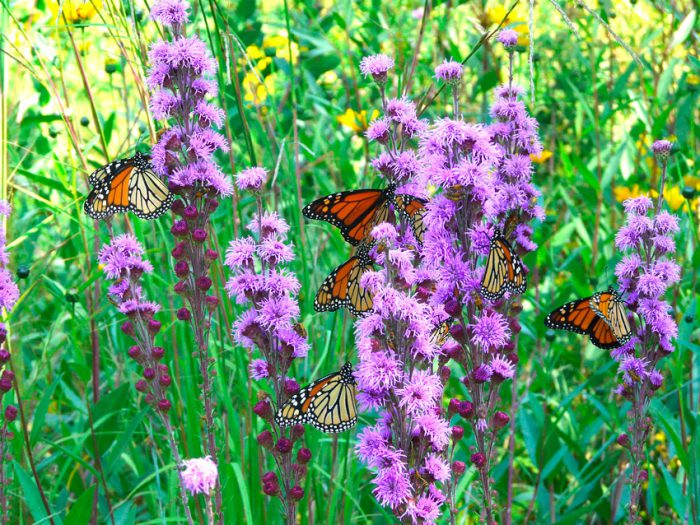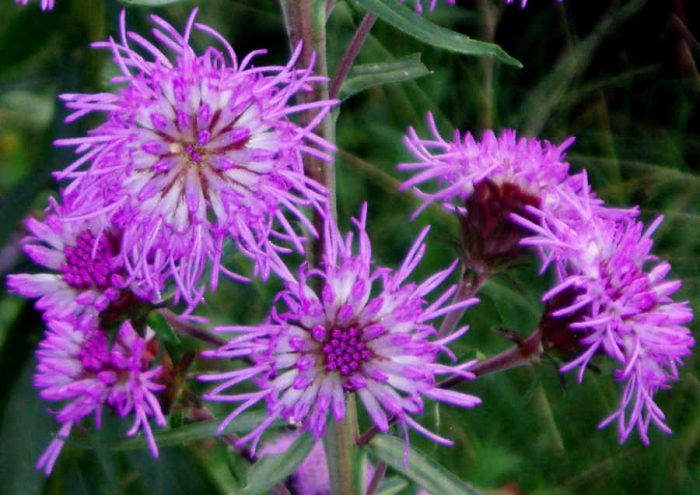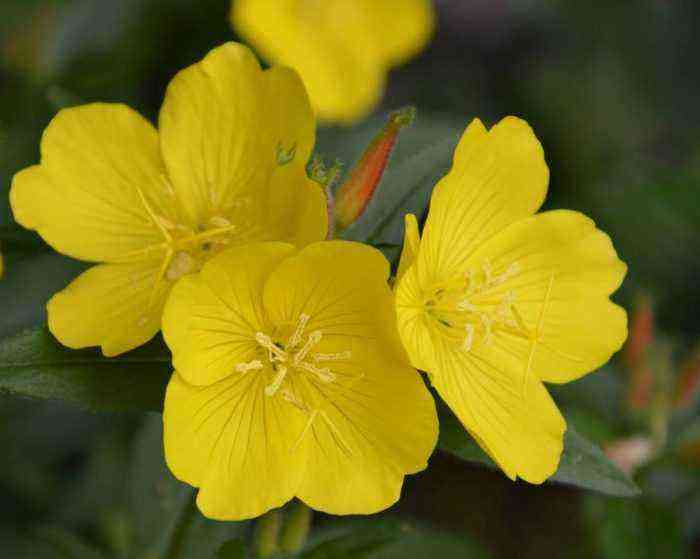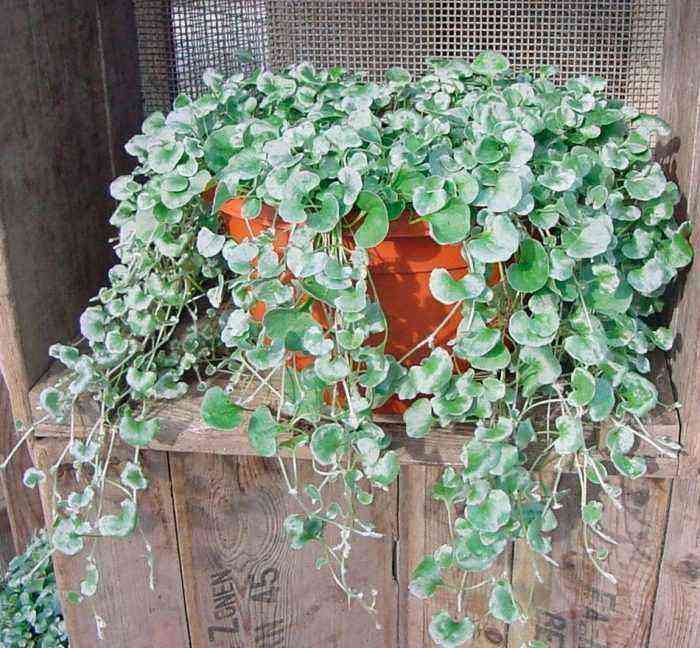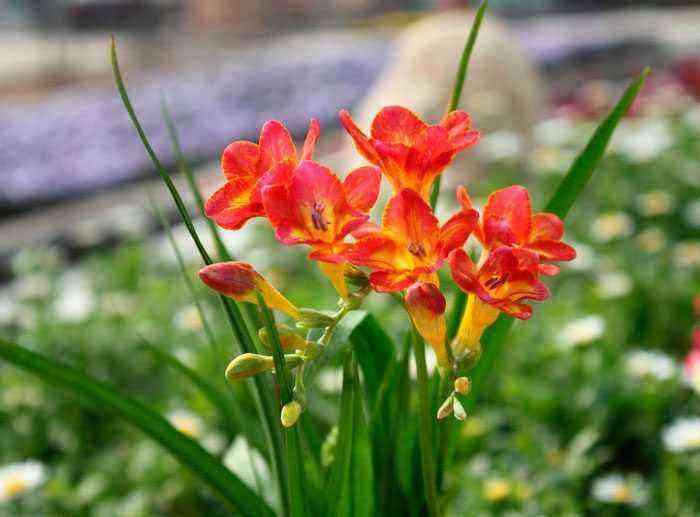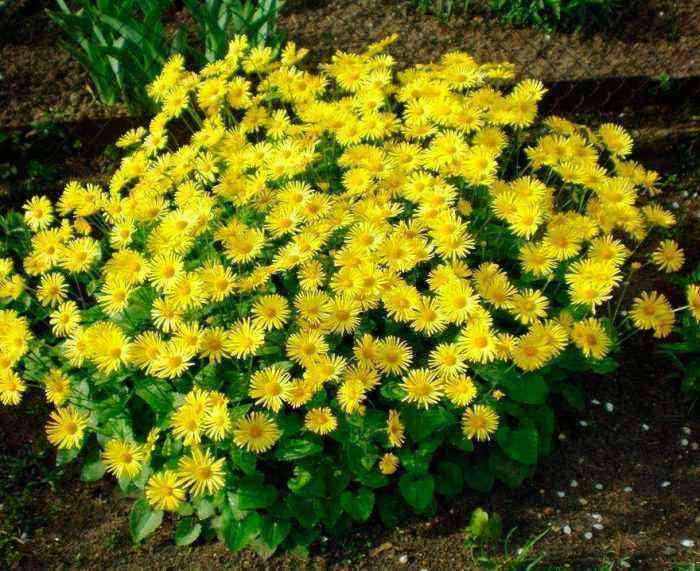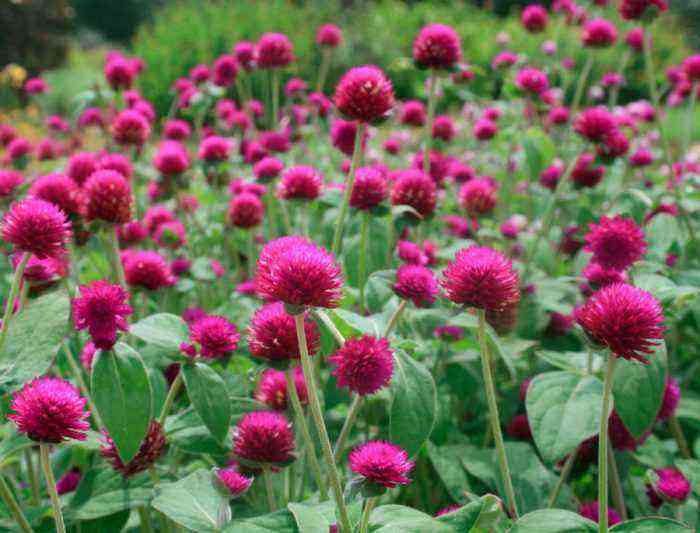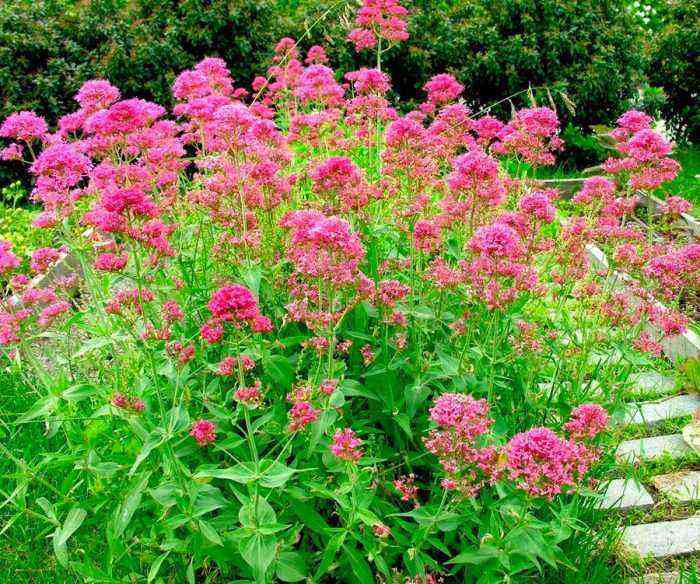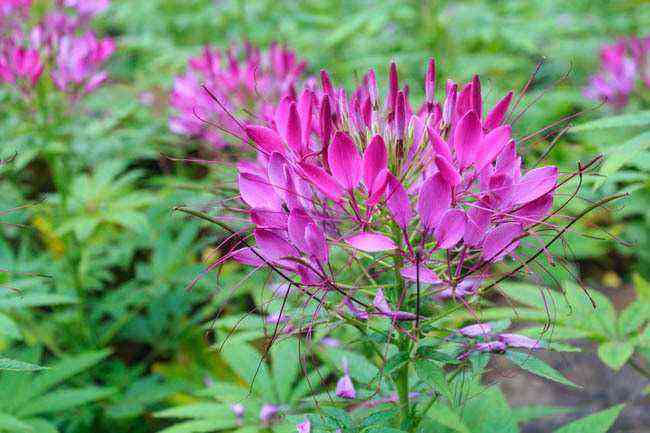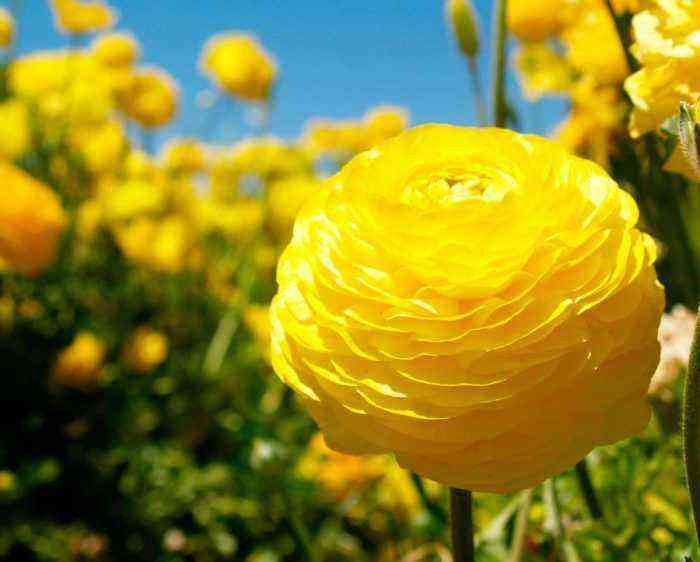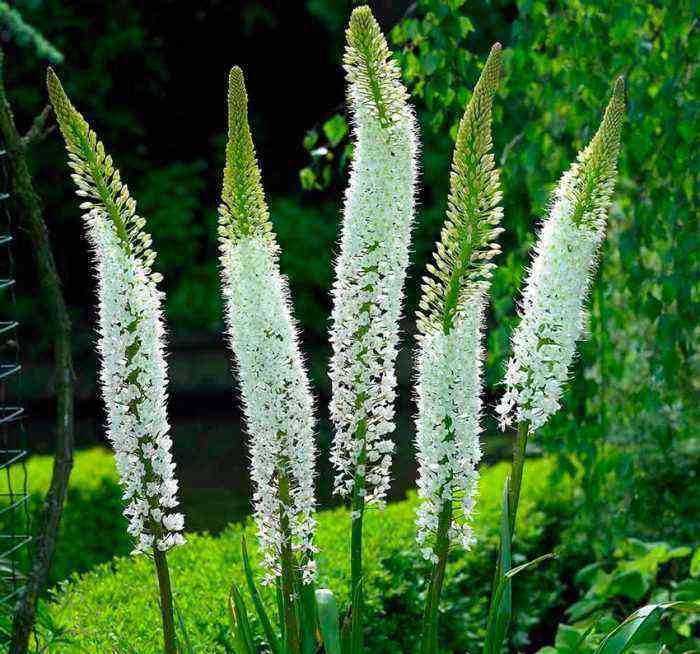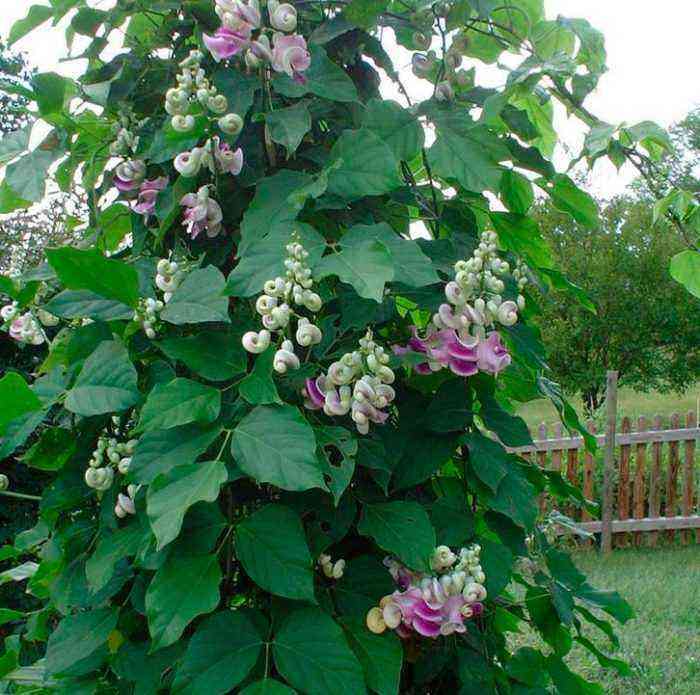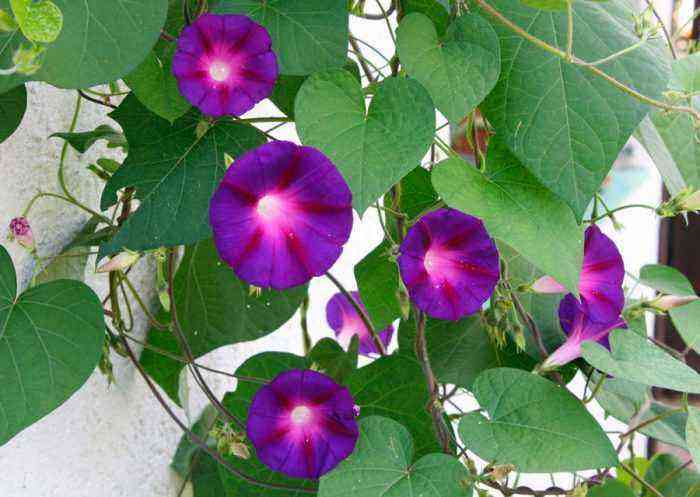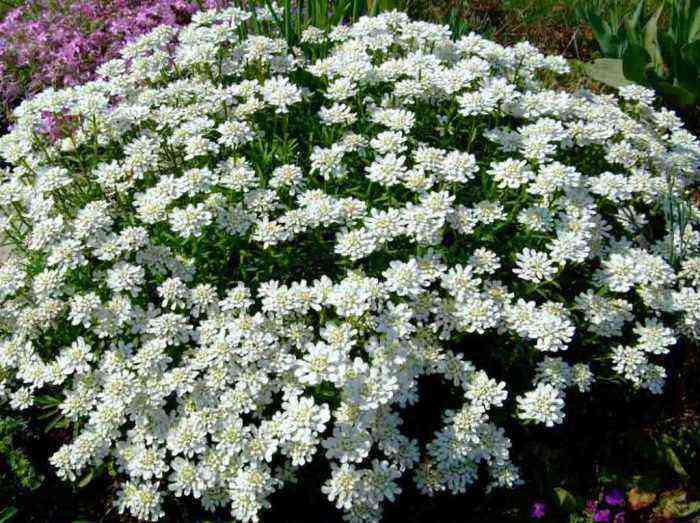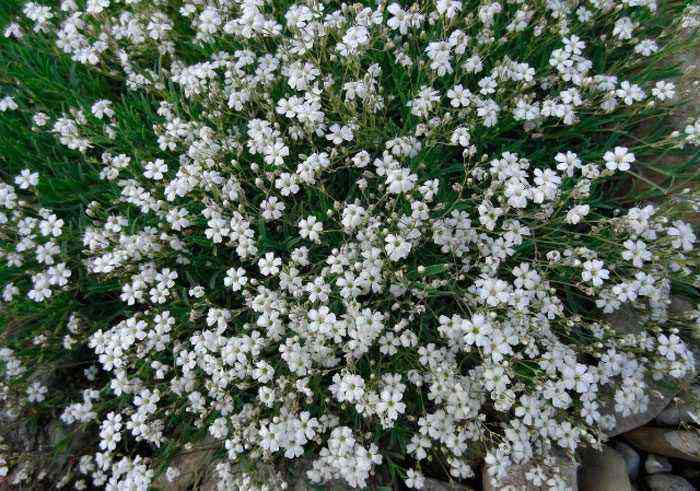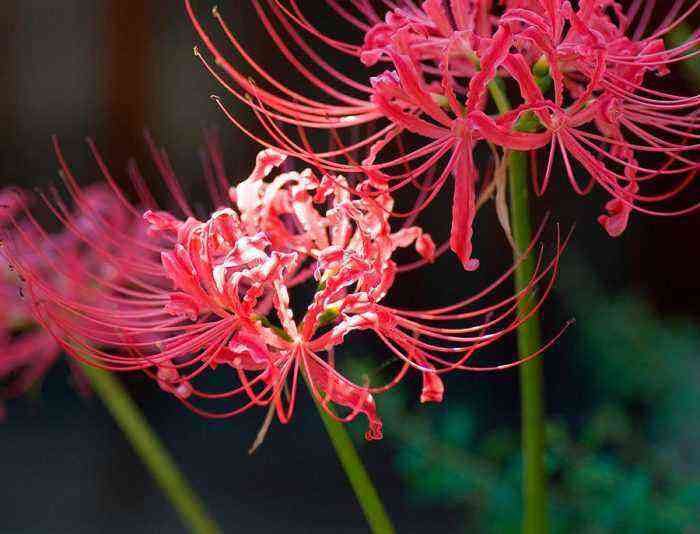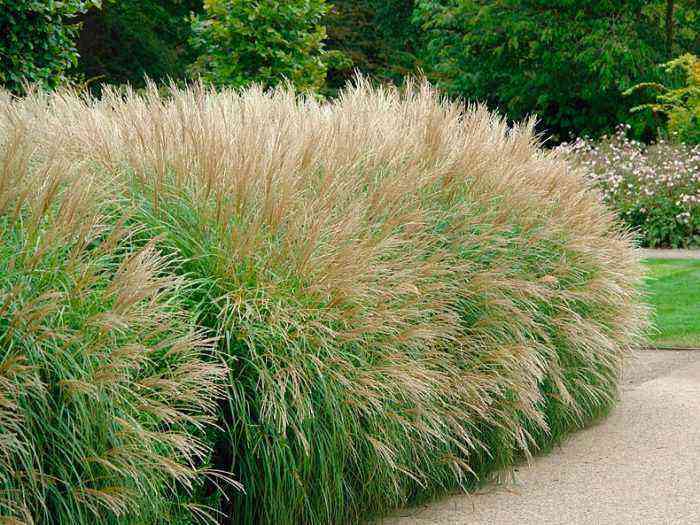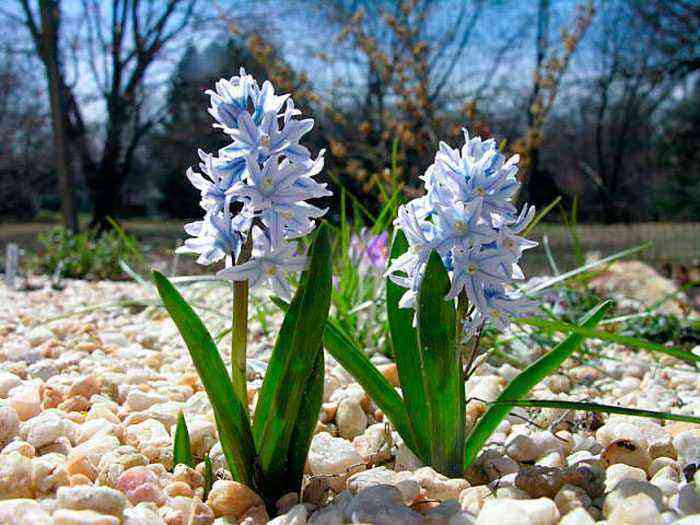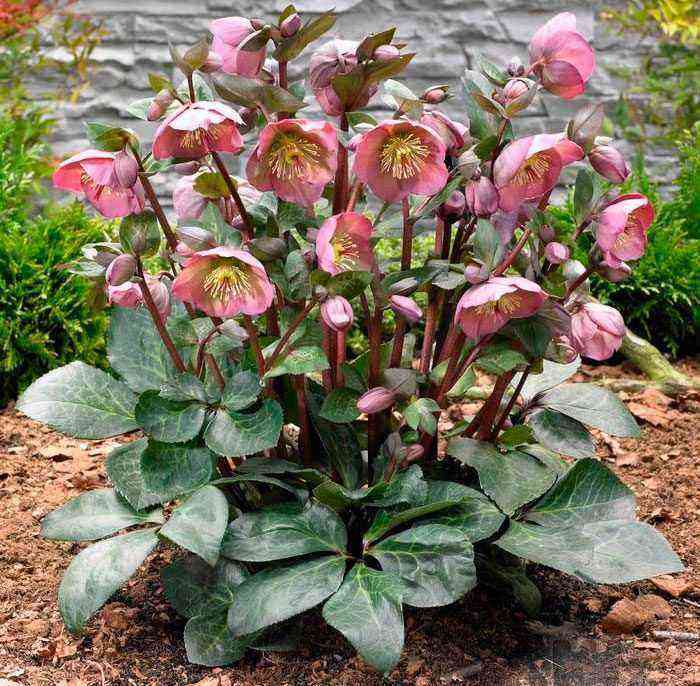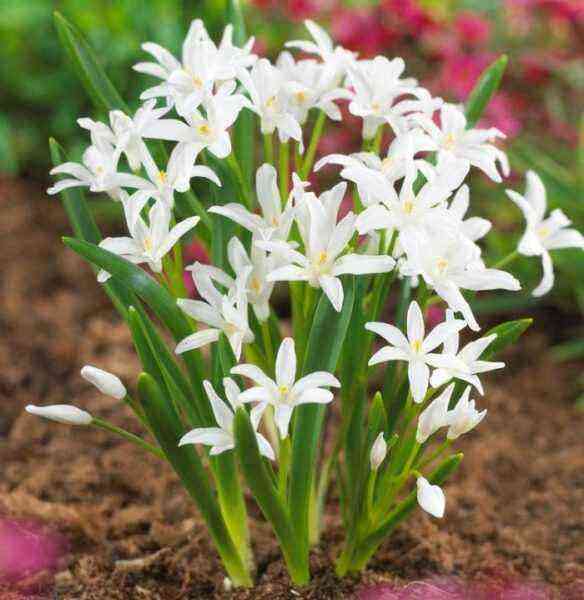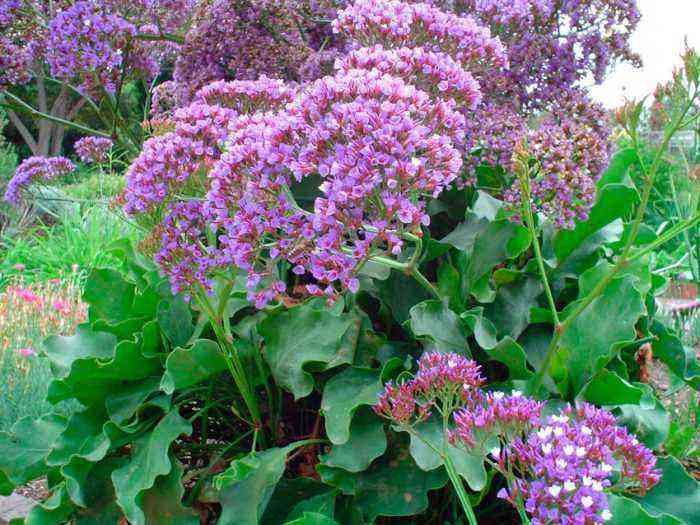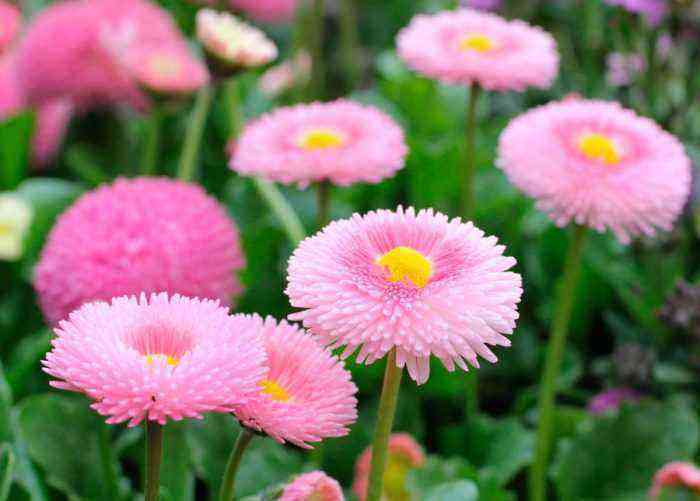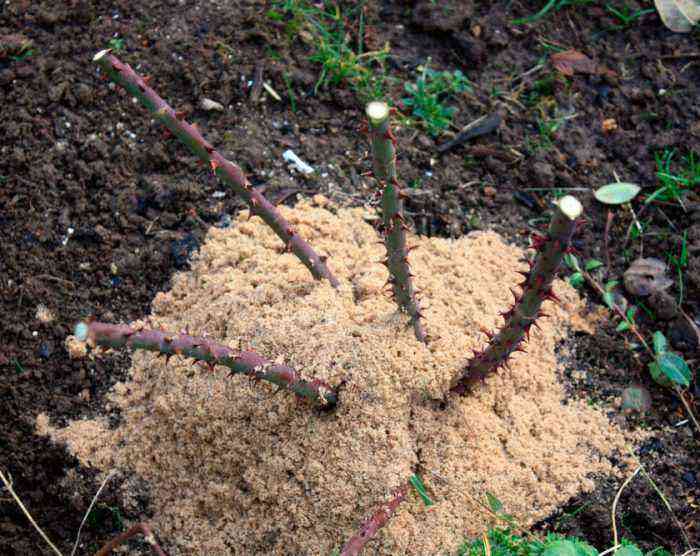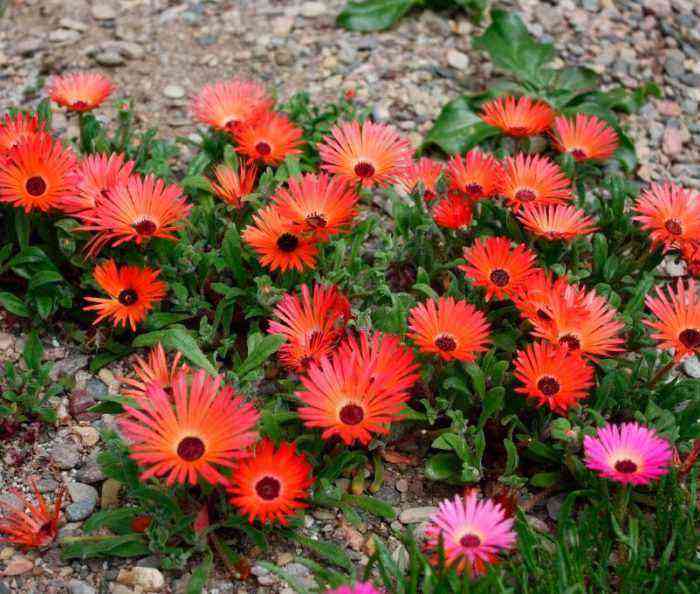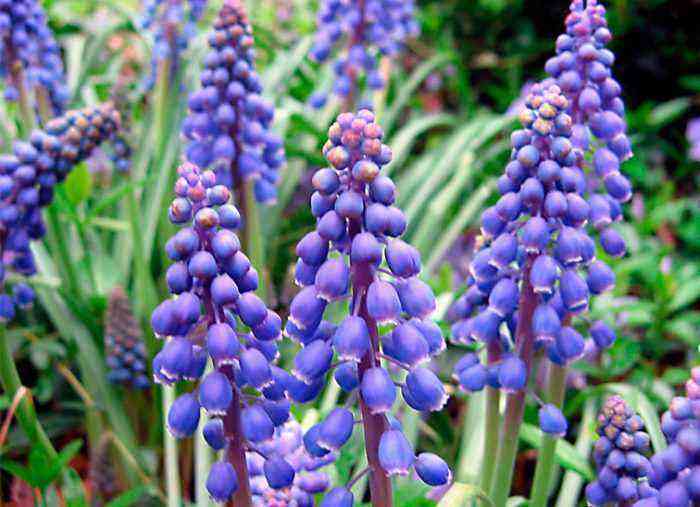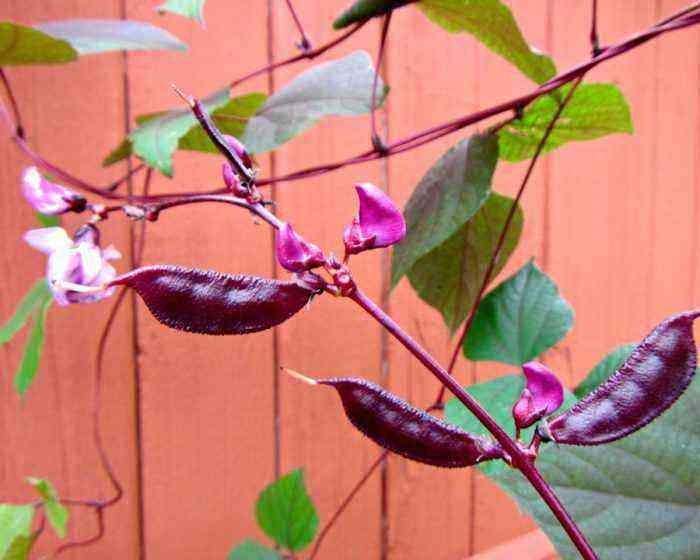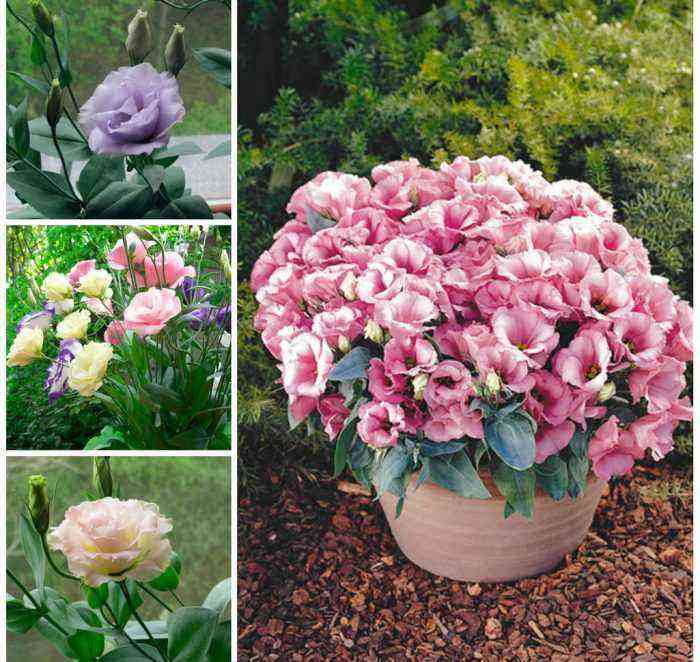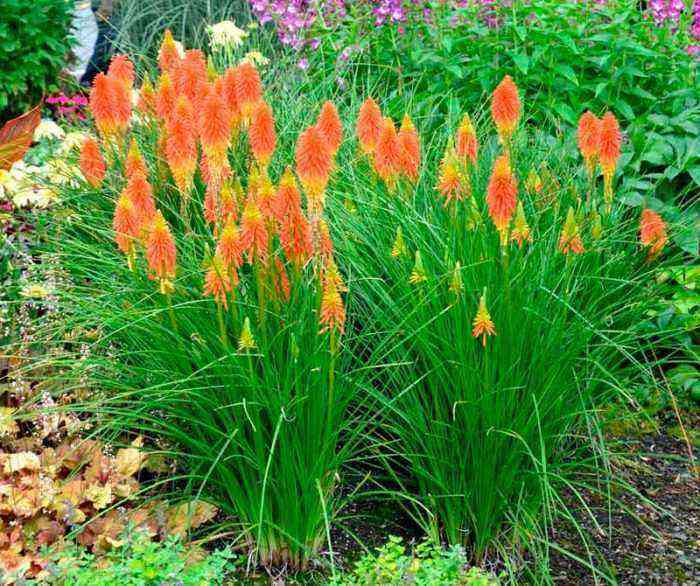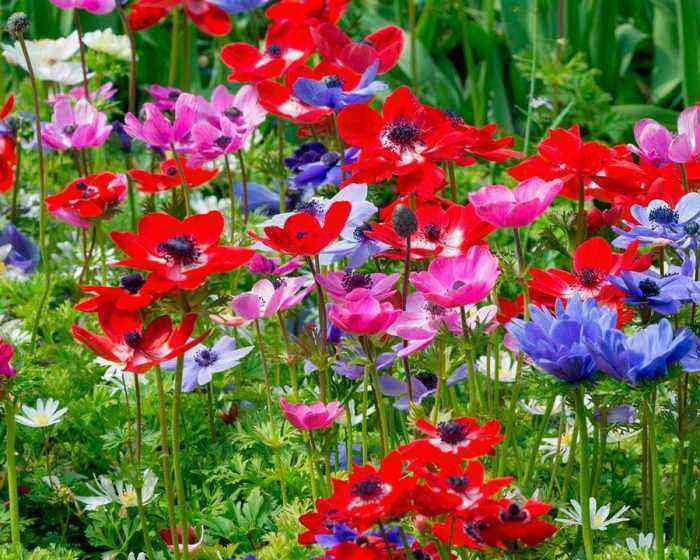Such a perennial flowering herb like Liatris is directly related to the Asteraceae or Asteraceae family. In natural conditions, it can be found in North America, Mexico and the Bahamas. There are approximately 20 natural species of liatris. The name of such a flower consists of two Greek words that translate as “smooth” and “doctor”. In Russia, such a flower is sometimes called “merry feathers” or “deer tongue”. Gardeners fell in love with this plant not only because of the very spectacular inflorescences-candles, but also because of the pleasant aroma, which combined the smell of fresh hay and vanilla. Such a scent is very pleasant to a person, but the moth on the contrary cannot stand it. Put one not very large twig of this plant in your closet, and the moth will never crawl into it again.
Features of Liatris
Liatris is a perennial. This rhizome plant has branched or simple standing shoots that are densely leafy. Linear pointed leaf plates can be alternate and whorled. Tuberous roots are outwardly similar to bulbs, and they are interconnected by thin roots. If you choose the right place for such a flower and take good care of it, then it can grow up to 200 centimeters. The color of tubular flowers can be purple-violet, red, purple-red, pink, and also white. The flowers are part of the baskets, collected in half-meter inflorescences, having a racemose or spike-like shape. Flowering begins in the summer, while flowers bloom from top to bottom in turn. The fruits are ribbed elongated achenes, on the surface of which there is a pile. Such a plant is planted as a solo one, as well as together with flowers such as: brunner, phlox, gypsophila, verbena and armeria. Cut flowers can keep their freshness in a bouquet for up to 1,5 weeks. Dry inflorescences are great for making winter bouquets.
Growing Liatrix from seeds
It is possible to grow liatris from seeds, and for this, both the seedless and seedling methods are used. However, gardeners prefer to use the seedless method of reproduction more, since this flower is cold-resistant, it is distinguished by its unpretentiousness and vitality. Sowing seeds in open ground can be done before winter or at the beginning of the spring period. Before starting sowing, the seeds need to be kept in a humate solution for 12 hours. The site must first be dug up, while humus must be introduced into the ground (by 1 m2 1 bucket of organic matter is taken). Then you need to prepare the grooves for the seeds, the depth of which should not be more than 10-15 millimeters. The prepared seeds must be spread out along the grooves and sprinkled with soil, and then watered. When growing liatris from seeds, it should be remembered that such a flower begins to bloom fully only in the second or third year of life. In autumn, this plant reproduces on its own by self-seeding, in this regard, with the emergence of seedlings in spring, you will only need to thin them out.
Planting Liatris in open ground
What time to plant
Liatris is very simple and easy to propagate vegetatively. In the event that there is already such a flower in the garden, then in August or September, the tuber of the plant can be divided into parts. Also, planting material can be purchased in special flower shops. However, before thinking about where it is better to buy liatris, you need to find the most suitable place in the garden for its cultivation. For such a plant, you need to choose an open place that is well lit. Direct sunlight will not harm the flower, while it endures the heat steadily, so the July heat is not afraid of it. The soil should be rich in nutrients, loose and well-drained. It should be remembered that liatris reacts extremely negatively to stagnation of liquid in the soil, since rot appears on its roots in a short time. In this regard, such a flower should not be planted in places with damp, heavy soil, in hollows and lowlands, as well as in areas where groundwater is too close to the surface of the earth. Planting is recommended at the beginning of the spring period or in the fall.
How to plant in open ground
Depending on the size, the tubers are buried into the soil by 3–10 centimeters. At the same time, remember that between the bushes you need to maintain a distance of 15 to 20 centimeters. The planted plants need to be watered, and the site should be covered with a layer of mulch (humus).
Caring for a lyatrix
Liatris must be watered, weeded in a timely manner, and also systematically hilled, since the surface root system can become bare after heavy rains. Due to the washing out of the roots on the area where the flowers grow, it is recommended to periodically fill up the soil. The peduncles of such plants are very high, therefore, in some cases, it becomes necessary to tie them to a support. Also, experts advise be sure to cover the area with a layer of mulch, since it is able not only to supply nutrients to the roots, but also to protect them, which will greatly facilitate the care of flowers. Also, liatris must be fed with mineral fertilizers. As a rule, during the season it will need to be fed 3 times, as follows: nitrogen-containing fertilizers are used in spring, and phosphorus-potassium fertilizers in summer. It is also necessary to remove the inflorescences that have begun to fade, this will preserve the decorative effect of the bushes, which, after flowering ends, will decorate the garden with their bright green foliage.
Transfer
Such a plant is transplanted in autumn 1 time in 3-4 years. During transplantation, experienced florists recommend dividing the tuber. The bush must be dug out and carefully cut into several parts, while each cut should have a root collar with tubers. When planting parts of a tuber between specimens, a distance of 25–40 centimeters should be observed, while they should be buried in the soil no more than 8–15 centimeters. The 1/3 part of the hole should be filled with humus, and then garden soil should be poured into it and everything should be tamped well. When you water the planting, the surface of the site will need to be covered with a layer of mulch (humus).
Diseases and pests
Planting and growing liatris will not be difficult for a gardener. This plant is distinguished not only by its unpretentiousness, but also by its high resistance to diseases. But at the same time, snails and bears can cause significant harm to him. As a rule, in order to get rid of such pests, it is recommended to resort to a simple folk method. Half a glass of beer is poured into the bottle, and then it is poured into the ground at an angle of 45 degrees, while the neck needs to be located 20-30 mm below ground level, in a not very large hole. Snails and bears, attracted by the aroma of beer, fall into a trap. However, it should be borne in mind that beer in such a trap must be changed systematically.
If moisture stagnation is observed in the soil, then rot may appear on the flower. In this case, it is necessary to cut off all the affected areas on the aerial part of the flower and only after that process the bush with a fungicidal agent. If rotting has arisen due to excessively heavy soil or close occurrence of groundwater, then you need to think about changing the site.
Liatris after flowering
After all the flowers and leaves wither, you will need to cut off that part of the liatris that is located above the ground, and then cover the area with a layer of mulch (peat, compost or dried leaves), the thickness of which should be from 10 to 15 centimeters. It is not recommended to mulch the plot with straw, because meadow rodents prefer to live in it, which like the rhizomes of liatris. In the event that the region where such flowers grow is distinguished by mild winters, then they will not need shelter.
Types and varieties of Liatrice with photos and names
Only 3 types of liatris are cultivated, namely: scarious, spikelet and rough.
Spikelet liatris (Liatris spicata)
The homeland of this species is the Southeast of North America. The shoots are highly leafy and about 0,5 meters high. Linear sheet plates. Small baskets consist of 8-13 tubular flowers, which are part of the spike-shaped inflorescences and are about 35 centimeters long. The plant begins to bloom in June or July. Duration of flowering from 35 to 40 days. Cultivated since 1732 Varieties:
- Floristan Weiss… The bush reaches 0,9 m in height. The color of the flowers is white.
- Floristan Violet… On the bush, which can reach 0,8 m in height, purple flowers flaunt.
- Kobold… The bush reaches a height of only 0,4 m. Its inflorescences are lilac-pinkish.
Liatris rough (Liatris aspera)
This look is not very popular. Its small pinkish lavender flowers are collected in long lush inflorescences. The height of the shoots reaches 100 centimeters. Glossy lanceolate leaf plates. This species is the tallest of all. There is a variety with white flowers – White Spire.
Liatris scariosa
Its leaf plates are somewhat wider (about 3 centimeters) than other species. The flowers are dark lilac-pink. Varieties:
- Alba… Has white flowers.
- September Glory… The height of the peduncles is about 100 centimeters, and the inflorescences are large, deep pink.
